计算机与信息工程学院实验报告
姓名:杨馥瑞 学号:2212080042 专业:数据科学与大数据技术
年级:2022
课程:数据结构 主讲教师:袁彩虹老师 辅导教师:_______
实验时间:2024年 __月 ___日 __午__时至__时,实验地点_512_
实验题目:单链表的操作
实验目的:本实验项目可以支撑“实验目标1. 熟练掌握线性表(包括顺序表、链表、栈和队列)的存储方式及其操作实现。”。
本实验通过验证方式引导学生深入理解单链表的逻辑结构、物理结构等概念,掌握单链表的基本操作,为后续学习打下基础,以便更好地达成后续更高层次的课程目标。
实验环境(硬件和软件)Dev c++ & windows11 x64
实验内容:
(1)编程实现单链表的基本操作:建立单链表,查找单链表,插入单链表,删除单链表;
(2)采用单链表结构编程实现:两个有序单链表的归并运算。
实验步骤:
实验内容(1):
结点的定义

链表的初始化

链表的打印

得到链表长度
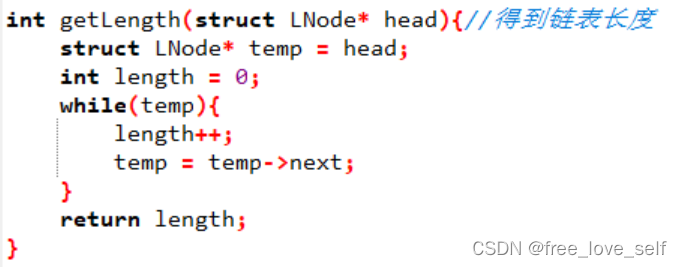
链表的插入
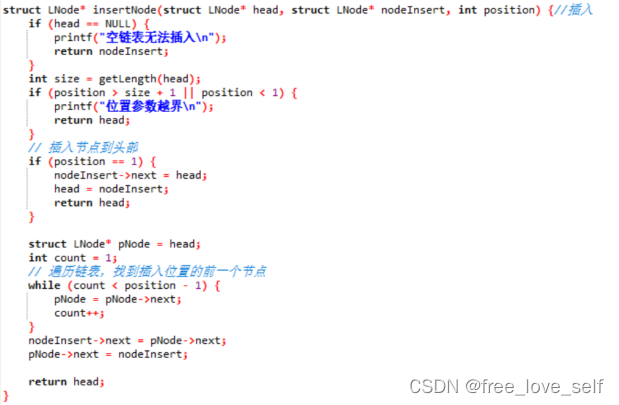
链表的删除
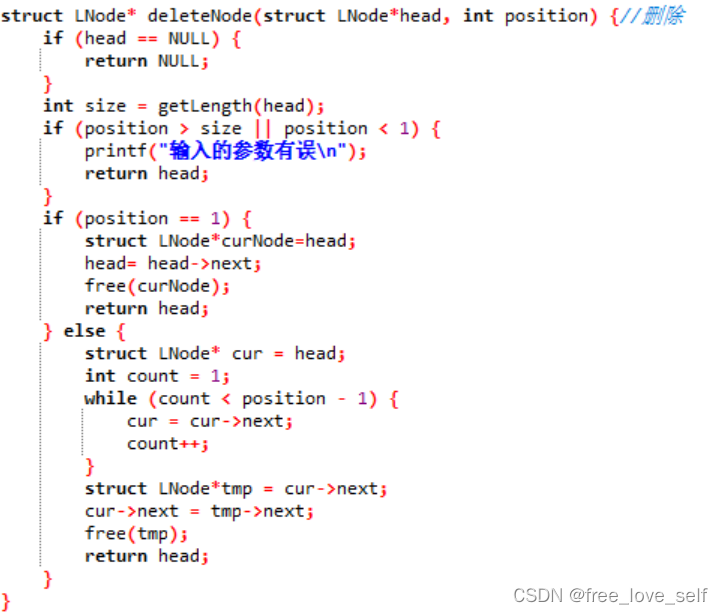
链表的按值查找和按位查找

实验内容(2):
先初始化list1 list2这两个链表
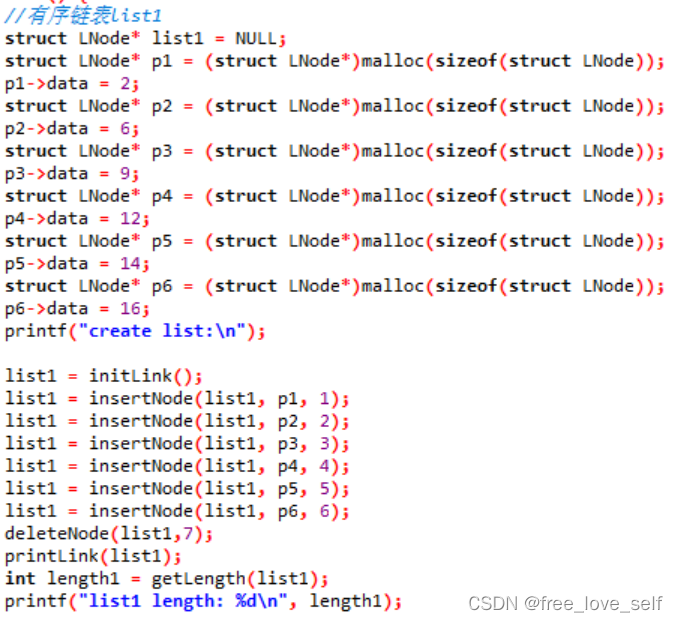

接着进行归并操作
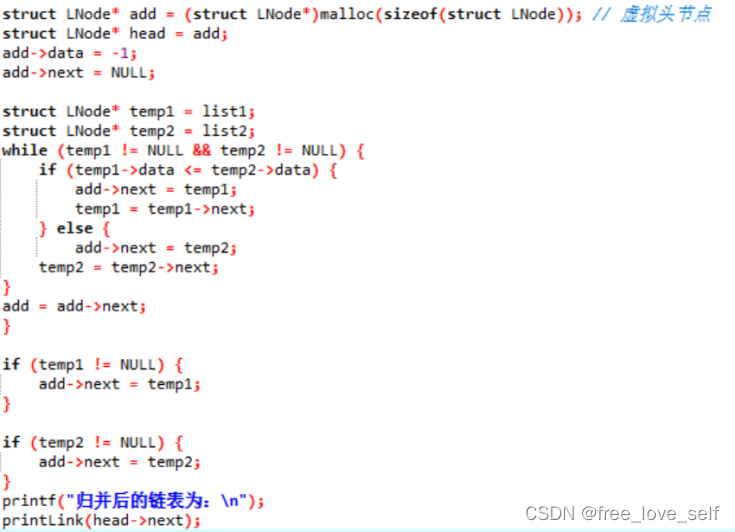
最后释放内存
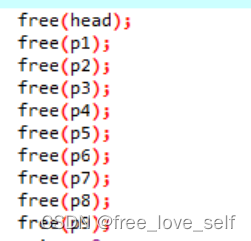
实验数据记录:
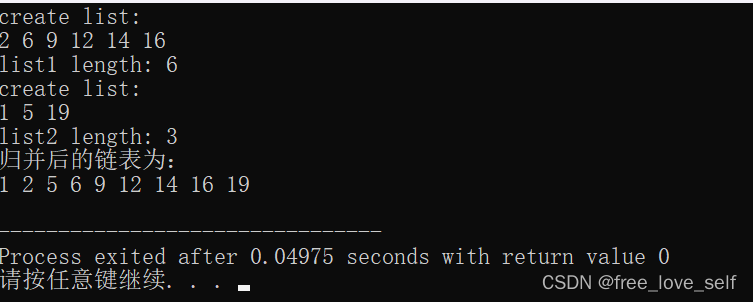
第一个为list1 第二个为list2 第三个是上面二者归并的结果
问题讨论:
感觉没有很多的问题,因为之前写过挺多的
编程导航算法通关村(链表)leval-1 – Yangfree的可达鸭 (yangfreeyyds.club)
之前博客上写过总结一些了
感觉最需要注意的是头节点要保留,别总是用着它去next,那就回不来了哈哈
其次就是c的指针大多是用结构体来写的,但是像是py,java,c++更多是用类来写的,比如
class ListNode:
def __init__(self, val=0, next=None):
self.val = val
self.next = next
listnode = ListNode(1)
个人还是更喜欢用类来替代结构体作为结点。
源代码:
#include<iostream>
#include <cstdlib>
#define ElemType int
using namespace std;
typedef struct LNode{
ElemType data;
struct LNode *next;
}LNode;
struct LNode* initLink(){//链表的创建
//创建头指针
struct LNode* head = NULL;
//创建头节点
struct LNode* temp = (struct LNode*)malloc(sizeof(struct LNode));
temp->data = 0;
temp->next = NULL;
//头指针指向头节点
head = temp;
return head;
}
void printLink(struct LNode* head){//打印链表
struct LNode* temp = head;//敢直接用head遍历的就是头铁
while(temp){
printf("%d ",temp-> data);
temp = temp->next;
}
printf("\n");
}
int getLength(struct LNode* head){//得到链表长度
struct LNode* temp = head;
int length = 0;
while(temp){
length++;
temp = temp->next;
}
return length;
}
struct LNode* insertNode(struct LNode* head, struct LNode* nodeInsert, int position) {//插入
if (head == NULL) {
printf("空链表无法插入\n");
return nodeInsert;
}
int size = getLength(head);
if (position > size + 1 || position < 1) {
printf("位置参数越界\n");
return head;
}
// 插入节点到头部
if (position == 1) {
nodeInsert->next = head;
head = nodeInsert;
return head;
}
struct LNode* pNode = head;
int count = 1;
// 遍历链表,找到插入位置的前一个节点
while (count < position - 1) {
pNode = pNode->next;
count++;
}
nodeInsert->next = pNode->next;
pNode->next = nodeInsert;
return head;
}
struct LNode* deleteNode(struct LNode*head, int position) {//删除
if (head == NULL) {
return NULL;
}
int size = getLength(head);
if (position > size || position < 1) {
printf("输入的参数有误\n");
return head;
}
if (position == 1) {
struct LNode*curNode=head;
head= head->next;
free(curNode);
return head;
} else {
struct LNode* cur = head;
int count = 1;
while (count < position - 1) {
cur = cur->next;
count++;
}
struct LNode*tmp = cur->next;
cur->next = tmp->next;
free(tmp);
return head;
}
}
int LocateElem(struct LNode* head,int val){//按照值查找位置(非贪婪)
struct LNode* pNode = head;
int count = 1;
while(pNode){
if(pNode->data == val){
return count;
}
pNode=pNode->next;
count++;
}
printf("not find");
return -1;
}
int GetElem(struct LNode* head,int position){//按照位置查找值
struct LNode* pNode = head;
int count = 1;
while(pNode){
count++;
pNode = pNode->next;
if(count>=position){
return pNode->data;
}
}
}
int main() {
//有序链表list1
struct LNode* list1 = NULL;
struct LNode* p1 = (struct LNode*)malloc(sizeof(struct LNode));
p1->data = 2;
struct LNode* p2 = (struct LNode*)malloc(sizeof(struct LNode));
p2->data = 6;
struct LNode* p3 = (struct LNode*)malloc(sizeof(struct LNode));
p3->data = 9;
struct LNode* p4 = (struct LNode*)malloc(sizeof(struct LNode));
p4->data = 12;
struct LNode* p5 = (struct LNode*)malloc(sizeof(struct LNode));
p5->data = 14;
struct LNode* p6 = (struct LNode*)malloc(sizeof(struct LNode));
p6->data = 16;
printf("create list:\n");
list1 = initLink();
list1 = insertNode(list1, p1, 1);
list1 = insertNode(list1, p2, 2);
list1 = insertNode(list1, p3, 3);
list1 = insertNode(list1, p4, 4);
list1 = insertNode(list1, p5, 5);
list1 = insertNode(list1, p6, 6);
deleteNode(list1,7);
printLink(list1);
int length1 = getLength(list1);
printf("list1 length: %d\n", length1);
//有序链表list2
struct LNode* list2 = NULL;
struct LNode* p7 = (struct LNode*)malloc(sizeof(struct LNode));
p7->data = 1;
struct LNode* p8 = (struct LNode*)malloc(sizeof(struct LNode));
p8->data = 5;
struct LNode* p9 = (struct LNode*)malloc(sizeof(struct LNode));
p9->data = 19;
printf("create list:\n");
list2 = initLink();
list2 = insertNode(list2, p7, 1);
list2 = insertNode(list2, p8, 2);
list2 = insertNode(list2, p9, 3);
deleteNode(list2,4);
printLink(list2);
int length2 = getLength(list2);
printf("list2 length: %d\n", length2);
struct LNode* add = (struct LNode*)malloc(sizeof(struct LNode)); // 虚拟头节点
struct LNode* head = add;
add->data = -1;
add->next = NULL;
struct LNode* temp1 = list1;
struct LNode* temp2 = list2;
while (temp1 != NULL && temp2 != NULL) {
if (temp1->data <= temp2->data) {
add->next = temp1;
temp1 = temp1->next;
} else {
add->next = temp2;
temp2 = temp2->next;
}
add = add->next;
}
if (temp1 != NULL) {
add->next = temp1;
}
if (temp2 != NULL) {
add->next = temp2;
}
printf("归并后的链表为:\n");
printLink(head->next);
free(head);
free(p1);
free(p2);
free(p3);
free(p4);
free(p5);
free(p6);
free(p7);
free(p8);
free(p9);
return 0;
}




















 1078
1078











 被折叠的 条评论
为什么被折叠?
被折叠的 条评论
为什么被折叠?








